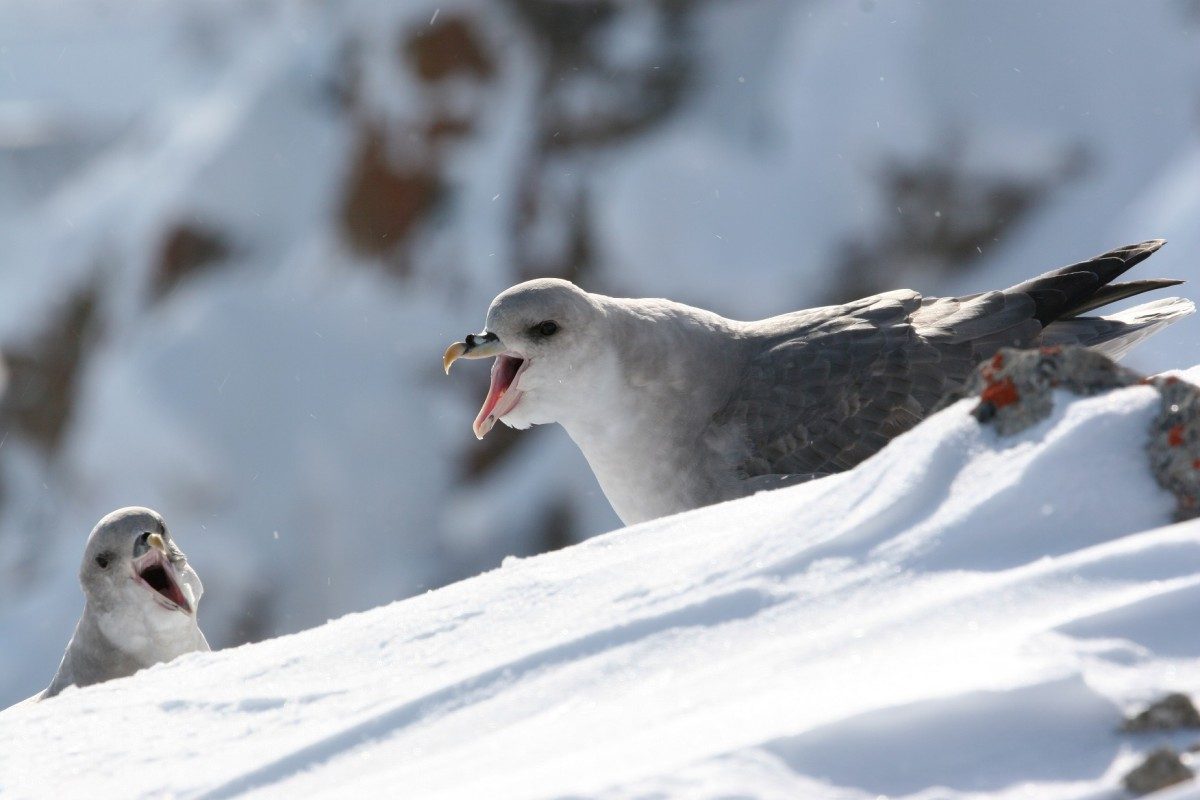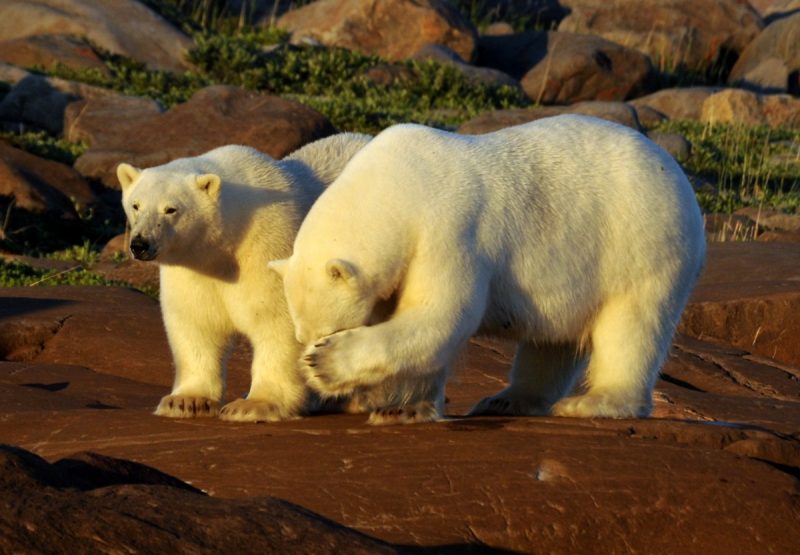
The northern fulmar, bird of prey. // Image from Mark Mallory
Where to eat in the North American Arctic
Researchers develop novel maps to help protect crucial Arctic ecosystems
A team of researchers lead by the University of Manitoba has finally mapped some of the best places to eat in the North American Arctic.
David Yurkowski, a postdoctoral fellow in the U of M’s Department of Biological Sciences, and his Canadian and international team, compiled the largest data set to date on where predators converge in the Arctic, publishing the results in the recent edition of Diversity and Distributions. They plotted these hotspots on the first-of-its-kind map, which can guide conservation efforts as a warming world opens the Arctic to resource development.

Polar bears coming together for a meal // Image: David Yurkowski
The team looked at movement data for marine predators in the North American Arctic consisting of 1,283 individuals from 21 species – including beluga whales, ringed seals, polar bears, gulls, sharks and ducks. A convergence of predators at any one location indicates a productive ecosystem, because to support them, there must be a good foundation of biomass, or, life. Thus, the researchers uncovered crucial areas of bounty.
“This was a huge national and international collaborative effort consisting of 39 other co-authors from 21 different institutions,” Yurkowski says. “We identified several important areas that can provide policymakers with a starting point for where conservations efforts should begin, given the many threats facing the Arctic. We need to protect these vulnerable ecosystems and right now, our data suggests the level of protection is too low.”
Indeed, the study notes that the overlap of these diversity hotspots and current conservation areas is low across the region: just 5 per cent (77,498 km2) and 7 per cent (83,202 km2) overlapped in summer–autumn and winter–spring, respectively. Although protecting the entire hotspot area, the researchers admit, is likely unfeasible if not impossible, current efforts need to be increased and this new map provides governments with a valuable tool.
The study also highlights the importance of governments working together and with NGOs, and points to an inspiring recent example of success that occurred in international waters of the high Central Arctic Ocean: 9 nations have placed a 16-year moratorium in these waters, allowing data collection and monitoring to take precedent prior to fishing activities.
The study “Abundance and species diversity hotspots of tracked marine predators across the North American Arctic” was made possible thanks to funding from Aarhus University, ArcticNet, Canada’s Species at Risk Act, Care for the Wild International, Canadian Institute of Ecology and Evolution, Danish Cooperation for the Environment in the Arctic, Danish National Environmental Research Institute, Earth Rangers Foundation, Environment and Climate Change Canada, European Commission Marie Curie IEF—Project 273061, Fisheries and Oceans Canada, Fisheries Joint Management Committee, French Polar Institute (IPEV)—Programme ADACLIM, Government of Nunavut, Greenland Institute of Natural Resources, Isdell Family Foundation, Ministry of Mineral Resources, Polar Continental Shelf Program, NSERC-Discovery Grant program, NSERC-Ocean Tracking Network, NSERC Postdoctoral Fellowship Program, Nunavut Implementation Fund, Nunavut Wildlife Trust Fund, Nunavut Wildlife Management Board, Oceans North Canada, Parks Canada Agency, PEW Charitable Trusts, Quark Expeditions, Schad Foundation, the Takla Foundation, the University of Alberta, Wildlife Media Inc., World Wildlife Fund (Canada) and World Wildlife Fund International Arctic Programme.
Research at the University of Manitoba is partially supported by funding from the Government of Canada Research Support Fund.






